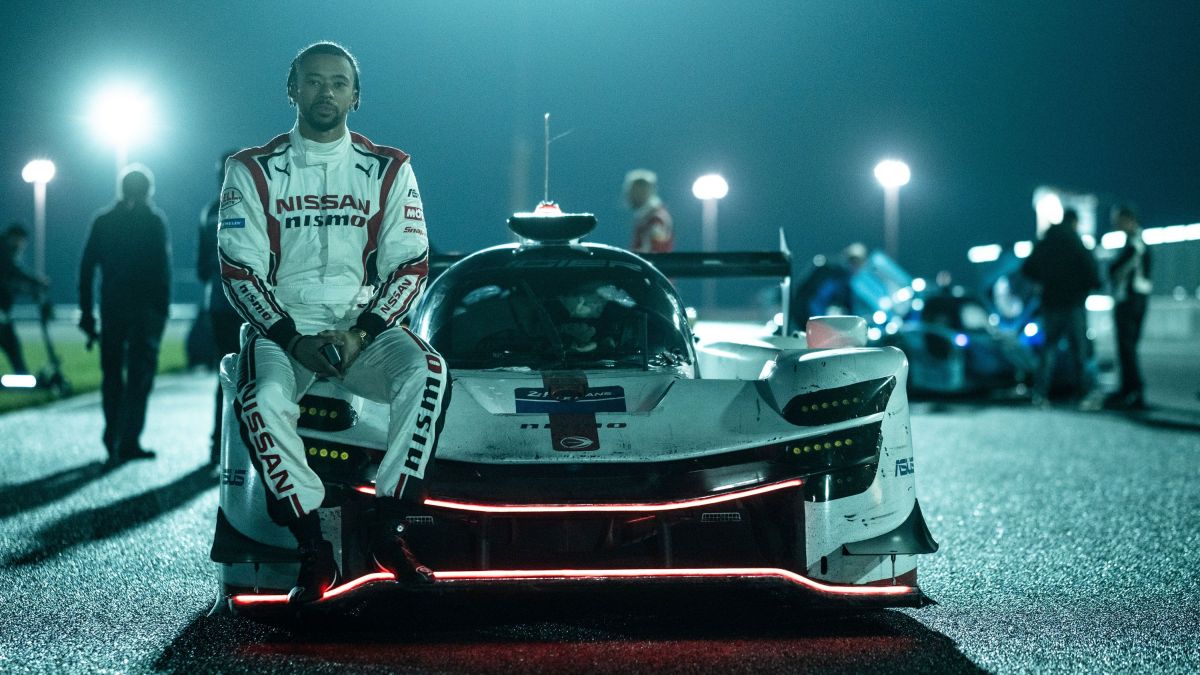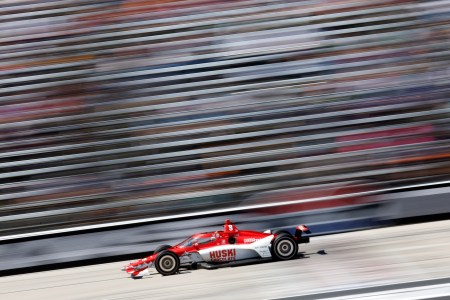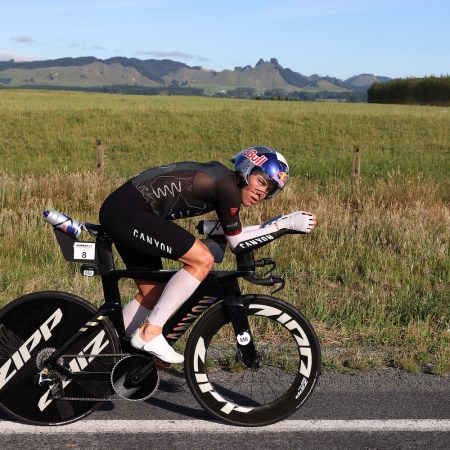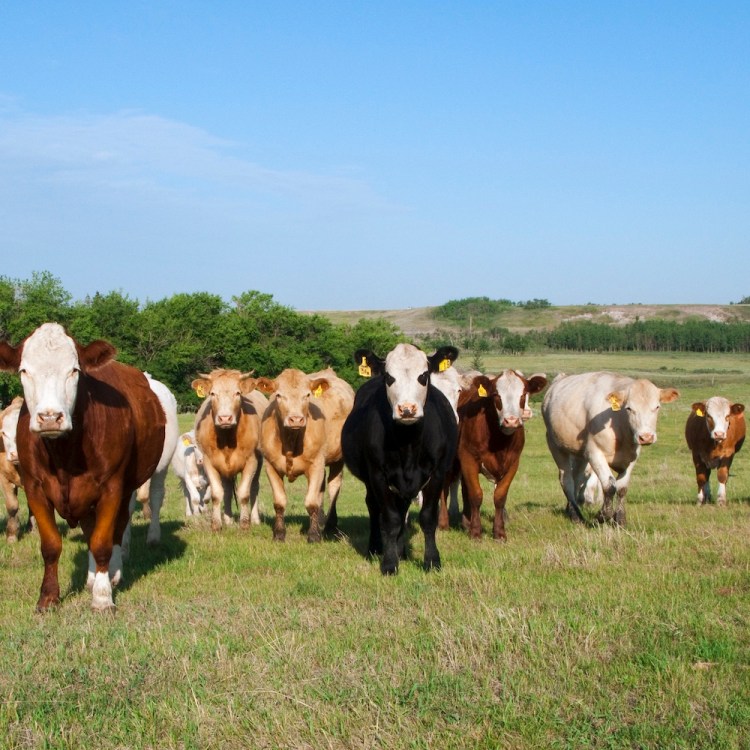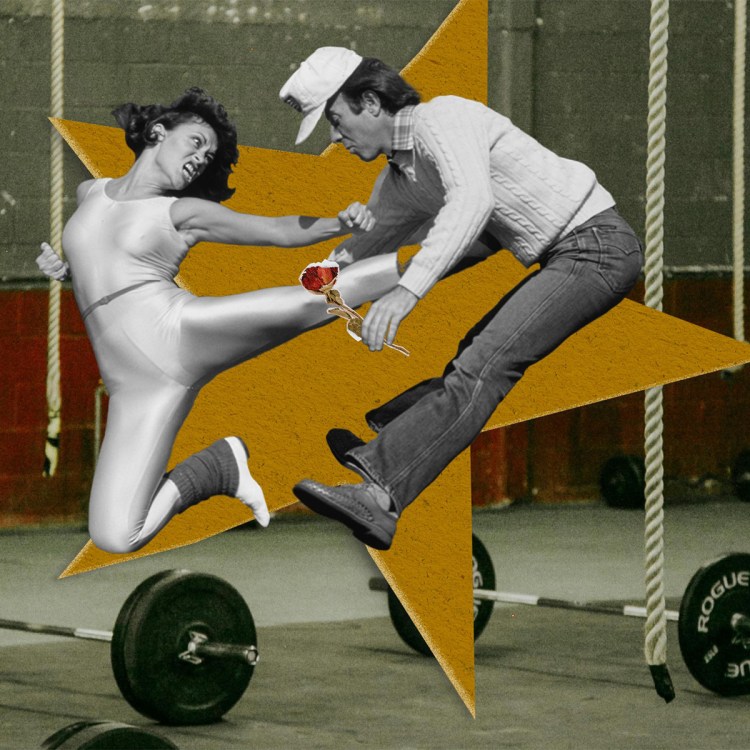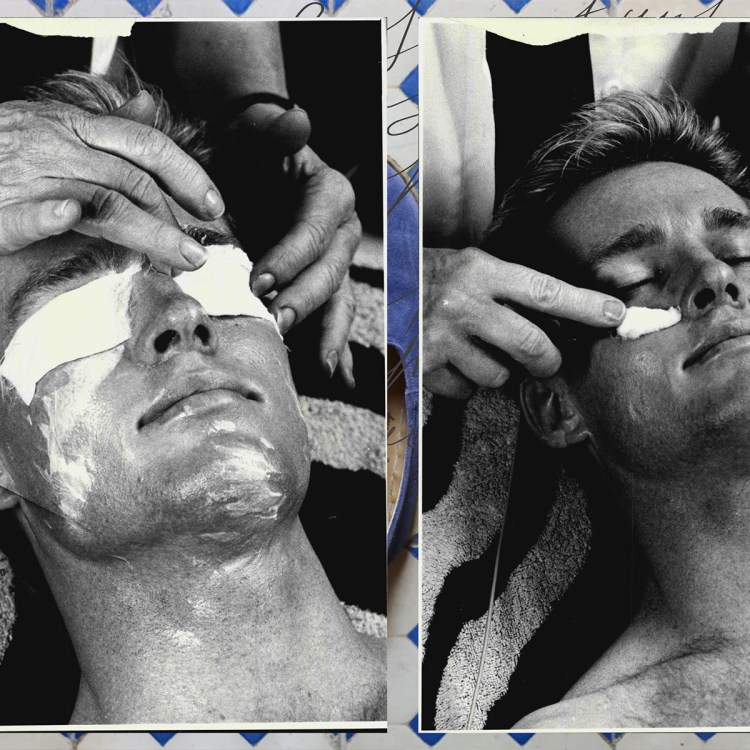Jann Mardenborough was 19 years old when he booted up Gran Turismo 5 on PlayStation one day and saw a menu option for “GT Academy: Try-Outs.”
The next click would change his life forever. He beat out 100,000 other gamers for the opportunity to drive a real Nissan race car at the Dubai 24 Hour Race as part of a marketing concept. Now the 31-year-old Brit is a legitimate professional driver, finding success in a number of racing series and even earning a podium finish at the legendary 24 Hours of Le Mans.
Mardenborough’s unthinkable rise inspired the movie Gran Turismo, now in theaters. We spoke with the driver about his unique journey, how gaming prepared him to strap into supercars, the challenges he faced and what it was like to be a stunt driver in the movie based on his life.
InsideHook: You were a fan of the Gran Turismo video game series growing up. Do you still play?
Jann Mardenborough: I’ve played and loved them all. I think my favorite games were Gran Turismo 2 and GT3. I’m a very nostalgic person, and I’ve played many hours on those games. I remember when GT3 first came out, my friend’s father bought a PlayStation 2, and we would go over to his house to all play it together. This was before PSN or any of that live or network system, so we were just handing the controller back and forth. We would hit split screen or go into career mode. I was playing Gran Turismo 5 when I got into the GT Academy. That was the last one I played before I got onto the track for real. Even though I’ve been racing professionally for 12 years, I still play Gran Turismo. I’m playing GT7 now, with the headset and the VR.
How do you think playing that game prepared you to really drive supercars?
From the very beginning, when I started to be passionate about Gran Turismo, I was always thinking beyond the game. I was dreaming about driving motorcars for real. That’s what I truly wanted to do. So the way that I was playing the game was trying to really picture myself in the car and taking in all of the sounds or scenes from the tracks. That’s why it was perfect when the GT Academy came around. I’d never driven a Nissan GT-R in real life, but the game gave me hints of what to expect. I’d never driven at Silverstone before in real life, but in the same way, I had these clues.
I knew how the track turns and what lines to follow with the car. There is no doubt that some people have a god-given ability to react well in the car, but there are things you can learn in the game no doubt. They do a lot of work to make it as realistic as possible. Now there’s a reason that so many drivers have sim racing as part of their training. For those wondering if playing Gran Turismo is a way to learn how to really learn how to driver supercars, I like to think I’m a a bit of proof.
Can Lindsay Brewer Make It to the Indy 500?
The 26-year-old talks G-force workouts, Mario Kart and breaking down barriersKnowing the tracks is one thing, but I have to imagine that the physical part of driving in the car is profoundly different than sitting at home in your living room.
The physical aspect of driving a car is definitely something that I had to contend with. I was pretty athletic anyways, and played a lot of football [American translation: soccer] growing up. But there are a lot of muscles that people don’t think about that are engaged the whole time during a track race. There are muscles in your arms and hands that are getting a massive workout. Even putting on the helmet and wearing it through the drive can be straining. You might take off the helmet and feel these muscles behind your ear being really sore.
There are also others factors that you don’t think of, on top of the muscles you are using to actually operate the car. Like the forces of gravity on your body from the drive and the weight of the gear you are wearing. But, secretly, the worst element is the intense heat that you experience in the cars, with the engines going full blast. Being in the car for three hours, wearing the suit, it’s so hot that it just depletes the energy out of you. Your body has to adapt to get used to that. Lastly, being in that intense a situation, your heart rate will elevate up to 140 or 150 beats per minute for a long time.
Did you guys have to go through a boot camp situation similar to what they show in the movie?
My class at the GT Academy was brought to the SAS [Special Air Service] training facility in the U.K. They wanted to put us into situations that were completely out of our comfort zone. They weren’t just curious whether or not we could pull off the physical feats, they were also very interested what we did when we were put into tough situations. They also wanted to see if we would quit or continue to push through regardless. That experience was actually filmed for the show they made about the GT Academy.
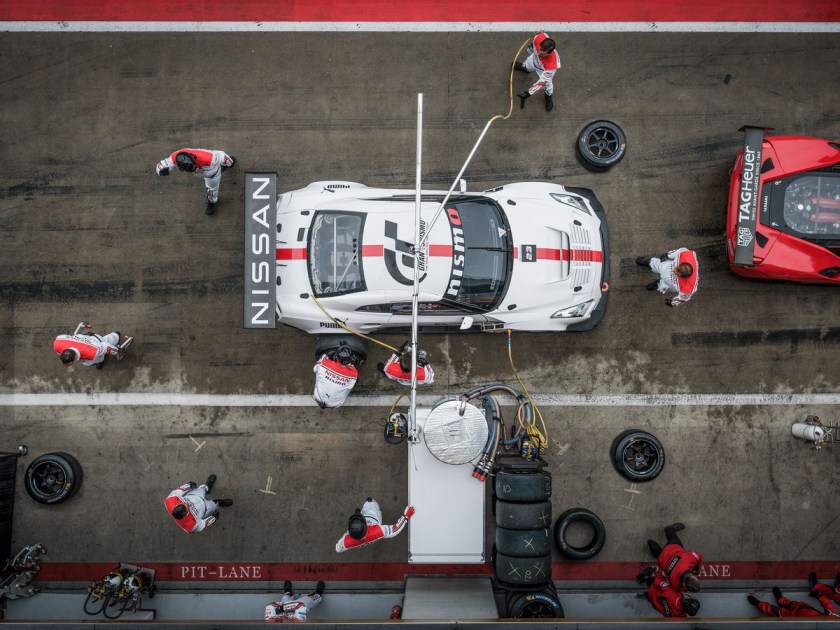
The way that you got into motorsports through gaming is so unique — I’m sure it’s hard to convey the emotions and pressures that you actually felt. How did you feel when your story was the one that they wanted to use for a Gran Turismo movie?
I was first approached back in 2017 by a few producers from the film, who said they were interested in using my story for a movie. But they said it in a way that left a lot of doubt. The key word for them was “maybe.” I was racing in Japan at the time, doing 16 races or so a year, as well as some tests. So there were 26 events in a year that I was scheduled for. The concept was interesting, but I was way too busy to put any serious thought into it.
2019 came around and suddenly I was meeting the writers and some of the producers, like Carter Swan. I was sitting down and speaking with them for a few days, and it quickly became more real. There was a good portion of the creative team behind this film that had done biopics before, which also gave me more confidence in their ability to do right by my story. The director Neill Blomkamp hadn’t done a biopic, but talking with him I saw how incredible his mind works.
The two stipulations I had were: the actor had to look like me and the character had to keep my name. If they were going to use my story, I wanted it to be known to be my story. Those are the only two things that I put my foot down about. I was open to everything else that they brought to me. But that is one of the reasons that I wanted to be involved, to help guide it in the right direction so that the story was told in a way that I could be proud of.
What was it like being involved in a major motion picture process and how much did they keep you in the loop as the production came to be?
I got to read every script from the very first one. Every single version the script got better, and I started to understand the process that scripts go through. I got on a call with Sony Pictures and the producers for seven hours after I got the first draft, giving them my thoughts and opinions. They were great in that way, and very receptive to hearing my input. There were factual things that I wanted to make them aware of, and then there were little things, like how my British humor works. I didn’t expect to get the co-producer title either, but here we are and I’m glad it went this way.
Sometimes you hear of people’s stories being taken and turned into something they don’t enjoy. That wasn’t the case here. The casting was also something I was very happy about. Archie [Madekwe] was a frontrunner from the start. The final casting came around after a few years of discussions. That’s when I first got connected with him. The first time was virtually on FaceTime while at an airport. I met him in person a week later and liked him straight off. He was asking all of the right questions, and even though he isn’t a big car guy or even a gamer, he was very focused on doing a great job with the role. It put me at ease immediately.
On top of being a co-producer you were also a stunt driver for a lot of the sequences. You might be the first person who can say they stunt-doubled for a character based on themself in a fictionalized movie.
I started to have a sense of what cars were going to be included from the first draft and I was very excited. I’m a movie-car fan, and I am very critical of how cars appear in movies. I will notice if the cars aren’t what they should be, or if they are being used in the wrong capacity just for looks. I was very adamant that all of the cars needed to be racing cars. For the car people, we had three LMP2s, one that was just like my car which was a Ligier JS PX, which is probably worth a million dollars. The car is a one-of-one. We also had four LMP3s. We had eight or nine Porsche 911 GT3 cars, as well as some other race cars like a BMW M6 and a Ford GT.
Doing a film with so many proper racing cars was incredible, but had challenges. There is so much that goes into getting a race car to operate correctly. Those things take time, which is something that you don’t have a lot of on a film set. They have to be at the right temperature and they have to be calibrated just right. So we had a full team of mechanics there who had worked on race teams, as well as a full Michelin tires crew to make sure we had the right setup for any situation. The studio bought a lot of the vehicles. One of them was the Ligier, which is that one-of-one, and they gave me a whole speech about being safe with the car. I was like, “I’ve been doing this racing game professionally for 12 years, I think I’m good.”
Because our lead Archie wasn’t actually doing the driving, they had to buy these racing cars and drill holes into the chassis so they can put a stunt driver on the roof of the vehicle. So they are taking these incredible cars and essentially destroying them. The car is written off. As a lover of these cars, that was tough to watch.
Outside of the emotional pain of watching these beautiful cars get drilled through, what were some exciting stunts that you got to pull off to depict your own career?
The film goes to Red Bull Ring in Austria and our rival Nicholas Capa rear-ends me in a Lamborghini Huracán during the second to last corner. The GT-R that I was driving, with about 700 horsepower, has a hydraulic rally-style handbrake in it. Normally these cars don’t have handbrakes, but this one had been adapted with one. This second corner at Red Bull Ring is a fourth gear turn, where you’re going around 110 or 115 miles per hour. So going that speed, I was meant to get hit, stomp the brake and pull the handbrake so that the car would spin.
The stunt coordinator Steve Kelso took me through the whole plan in detail and then it was time to try. I nailed the stunt straight away, on the first try. But since we were filming a movie, we had to do it 10 more times to get all of the angles. There is something so strange about going into a drive knowing that you are going to crash. I think that is something unique to the stunt world.
That was also the place that we were going the fastest in the cars for the stunts — probably around 165 miles per hour in my car during some of the straightaways. People might wonder why we had to go so fast while filming a movie, and not use movie magic, but that’s how they wanted to make it. There is nothing static about this movie, so for the car to appear to be going fast you have to really be going fast. Of course, for me and the other stunt drivers that was great news. We had a good reason to push it a little bit on the track.
There was another challenging scene that happens in Dubai, where the Capa character hits me again and I’m meant to push him into the guardrail. They wanted the window to come in on impact, but the alignment wasn’t there. So they needed me to pull the window in with some cord. That just added another wrinkle to the stunt, where we’re going high speeds, crashing, and I’m also pulling a window in to mimic damage from the crash.
How a Former F1 Driver Won the Indy 500
Marcus Ericsson on what it takes to win the “greatest spectacle in racing”It was pouring rain when you actually drove the iconic Le Mans race, and it’s depicted the same way in the movie. What was it like filming that?
The Le Mans scenes were probably the most difficult in terms of the location and setting. Since there was rain when I actually drove Le Mans, they wanted to be true to the moment. In order to get those visuals we had to bring in these huge water towers that were pouring down on us. There is a reason that drivers don’t love competing in the rain, there are a lot of new variables. There are even more on a movie set.
We were driving around the circuit in the dark. Our headlights were taped up for the cameras. There were flood lights that were very bright because of the rain. The track was freshly painted, so that rain was washing and mixing with the paint. That was getting into our windshields, both the rain and the paint. That made visibility questionable for sure. It was unlike anything I had experienced before.
The toughest moments of the film surround your crash at Nürburgring, which I’m sure was difficult to relive. What did you think about the decision to include that in the film and how it was portrayed?
I was told that they wanted to include my crash at Nürburgring from the very beginning of the script-writing process. I understood the decision, because it’s a big part of my story and my journey. Without it my path has been very sunny, a young kid growing up playing video games and becoming a professional race driver with a good amount of success. But there was adversity, and this was absolutely one of those moments of growth. Once it was clear that it was going to be in there, it was important for me that it was true not just with the facts but also with the emotion and pain at that time. It was a dark time for me. People were coming to visit me, and there were things that I had to deal with in that hospital bed.
Of course it’s difficult to relive that time and even to talk about it. I’m someone who puts away the things that happened in my past, the good and the bad, as soon as I have processed them. For this film, I had to open up a box that hadn’t been opened for a long time. Now that the movie has come out people have looked back at my career and sometimes people will tag me in the video of the crash. It’s still difficult to see. But in the end, I was happy with how it was done, and if someone can find the strength to get back up on their feet after seeing those scenes then it was worth it.
That moment really showcases the difference between playing a video game and living in a real-world situation. In the games you just respawn or go back to the last save point, but this was something that there was no quit button for.
There’s no arguing it, people have always been curious about the crashes. You see it in all professional motorsports — there are clips that go viral or have millions of views. People are talking about the crazy crashes that happened each week, and to be honest I was one of those people who was curious when I first started to follow Formula. I would go online to watch the full races, and when I saw a crash I couldn’t look away. But now, as someone who’s lived through it in real life, I find it difficult to watch them.
As you can imagine, it’s not a fun experience going from 160 miles per hour to zero almost immediately. These cars have so much power, which is why people are drawn to the sport, but with that power comes risk. I learned a lot about mortality in that moment. I now appreciate the severity of the worst-case scenario in our races. Fear is just something that a race car driver has to deal with. If anyone says that they don’t feel any fear while driving, they’re lying. But in a strange way, I feel more fear when I’m watching others push the limits and race. I don’t feel fear when I’m putting on my helmet and strapping into my car. Or at least not as much as when I’m watching others.
Do you have any rituals on the track?
I used to have a lot of rituals, but I have since gotten rid of the majority of them because I think there’s a tendency to blame missing rituals than take real stock on what went wrong. So now I only have one ritual, which is looking up at the sky after my helmet and gear is on. That’s because there’s always a chance that’ll be the last time that I see the sky, and I want to make sure I appreciate it. Then I can go to war.
I know that you’re still actively driving and this movie is just a part of your current journey. What are your plans as far as racing next?
That’s right — the movie covers my arriving at the GT Academy and then the first four years of my racing career. The plan for this coming year is to do Le Mans again, in the Le Mans Hypercar P1 class. I would like to do more racing in America as well, perhaps IMSA again, in P1. The goal is and has always been to win championships.
Speaking of getting into a race car, was there a car that you loved to drive in Gran Turismo that you found yourself driving for real? How special was that moment?
Every year back when I raced for Nissan in Japan they had this event where they would bring out the old vehicles and have all the drivers jump in them. There was a car that I used to love to play with in Gran Turismo 2, an R33 Nissan Skyline GT-R, which raced at Le Mans in the GT2 class. In the game the car had a special livery, which was from a company called “Keep The Dream Alive.” I got to drive that car for real, which has the exact same livery that I remember from the game. I get goosebumps just thinking about it.
The Charge will help you move better, think clearer and stay in the game longer. Subscribe to our wellness newsletter today.
